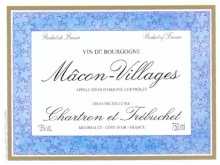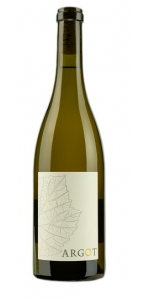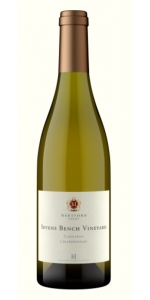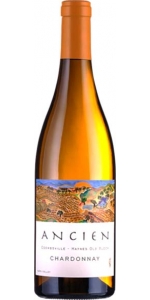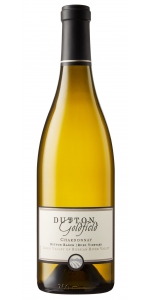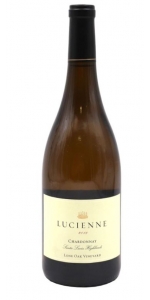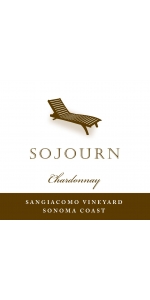Chartron & Trebuchet Macon-Villages Chardonnay 2018
| Country: | France |
| Region: | Burgundy |
| Winery: | Chartron et Trebuchet |
| Grape Type: | Chardonnay |
| Vintage: | 2018 |
| Bottle Size: | 750 ml |
Argot Chardonnay Sonoma County is made from 100 percent Chardonnay.
Pouring a green-tinted gold, our Sonoma County Chardonnay is a beautiful wine from word go. Radiating from within, a blast of apple/pear fruit informs this wine both aromatically, and on the palate. As flavors unfurl, a progression of orange blossom, pineapple, white peach, and hazlenut are followed by a finish dominated by ginger, baked apple, with a trailing kiss of mint’s freshness. A stunning wine — wholly informed by the perfection of 2018’s growing season — defined by its dichotomy of massively intense flavors, and superb acidity and freshness.
Raised by minimalistic methods, often associated with the classic Chardonnay winemaking techniques of Meursault. With a focus on the coolest Chardonnay region in Sonoma County, 2018’s long, even growing season favored our vineyards’ moderate climate, old vines and deep volcanic soils. These grapes were allowed an extended ripening period on the vine, resulting in perfect balance and concentrated flavors.
Hartford Court Sevens Bench Vineyard Chardonnay is made from 100 percent Chardonnay.
True to its Carneros roots, the 2018 Sevens Bench Chardonnay carries the hallmark of the region – fruit intensity balanced by and good acidity. The aromas are driven by classic lemon drop, Meyer lemon, and lemongrass. That fruit style follows in the flavors, with the citrus focus carrying through with candied lemon drop balanced by the mineral and flint characters inherent to the region and the clonal selections. Barrel fermentation notes in the background add even more complexity to this elegant wine.
Review:
I always seem to find a tropical slant in Chardonnay from Carneros, and the 2018 Chardonnay Sevens Bench Vineyard has it in spades, with ample pineapple, honeyed peach, pear, and toasted spice-like aromas and flavors. This is another balanced, rich, medium to full-bodied Chardonnay from this estate that's loaded with character. Drink it over the coming 5-7 years
-Jeb Dunnuck 95 Points
Ancien Chardonnay Coombsville Haynes Old Block is made from 100 percent Chardonnay.
Inspired by the classic and most revered Chardonnay vineyard in the world, Le Montrachet, Ancien winery utilizes the same classic techniques. It is fermented in tight-grained French Oak cask after a gentle squeeze as whole clusters. The wine is not moved through the fermentation and aging period, only pushed by inert gas in gentle fashion into the bottling tank. In vintages where the wine achieves good clarity through natural settling, the wine is not filtered – otherwise it undergoes a light polish to help reveal is core of fruit.
The effusive nose welcomes with layers of lemon meringue, ripe apple, citrus zest, honey and grape blossom. The palate is vibrant and fresh, and the richly textured mouth-feel is expansive. Baked apple tart and stone fruit emerge as this opulent wine reaches the depths of your palate, with further notes brioche. The finish is a focused amalgamation of minerality and ripe fruit. Give this cellar worthy Chardonnay time to open up and it will reveal increasingly lush and creamy layers as it evolves over minutes in the glass and the years in the bottle.
Dutton-Goldfield Rued Vineyard Chardonnay is made from 100 percent Chardonnay.
The nose leads with tangerine, apricot, and kiwi fruit, accented by lemon oil, orange blossom, and hazelnut. In the mouth, the fruit/floral and bright/rich theme continues, with the lychee and Meyer lemon top notes joined by Asian pear and Gravenstein apple, framed with honeysuckle and gardenia.
The dual nature of the wine makes it pair well with both rich and light fare, like lobster roll, roasted pork, or sautéed sole.
Review:
From a clone once called the Chardonnay Musque selection, this wine is highly aromatic and fresh. Juicy tropical fruit and tangerine flavors remain crisp and brilliant, leading to a complex midpalate of Meyer lemon and pear. The finish is topped by lasting, lingering layers of hazelnut.
- Wine Enthusiast 94 Points
Hahn Estate Lucienne Chardonnay Lone Oak Vineyard is made from 100 percent Chardonnay.
Reviews:
Lemon blossom, grapefruit rind, pastry flake and a hint of ash show on the nose of this single-vineyard expression from the Hahn family. It's suave and broad on the palate at first, then it chisels down to pinpoint acidity, delivering flavors of apricot, lime zest and chalk before the slightly nutty finish. Matt Kettmann
-Wine Enthusiast 94 Points
Sojourn Chardonnay Sangiacomo Vineyard is made from 100 percent Chardonnay.
The core of Sojourn Sangiacomo Vineyard Chardonnay is from the same vineyard source as the highly-acclaimed Sojourn Sangiacomo Vineyard Pinot noir wines. This wine features a combination of Clone 95 Chardonnay from Sangiacomo Roberts Road Vineyard and Old Wente Clone from Sangiacomo Vella Ranch. The Roberts Road block, planted in 1998, provides minerality and vibrancy. The Old Wente Clone selection is known to produce distinctively small clusters, low yields, and results in elegant, complex wines that round out this blend. These ranches are perfectly suited for growing Chardonnay, with cool climates and well-draining soils.
Sojour Chardonnay is fresh and lively, fruit-forward with bright acidity, stone fruit, citrus and apple flavors that leave your mouth watering.
Chartron & Trebuchet Macon-Villages Chardonnay is made from 100 percent Chardonnay.
White gold in color with silver highlights. The notes of chalk and limestone make it a very tense and mineral wine. The palate is complex with aromas of lemon and orange blossom. The freshness is ensured by a good acidity that pleasantly wakes up the taste buds.
Ideal as an aperitif, but also with poultry and veal in creamy sauce, creamy risotto with meat or fish, grilled fish, cold antipasti and ratatouille, mixed salads, sushi. Perfect with Goat cheese.
The Chartron et Trebuchet Estate
Owners of Premiers and Grands Crus in Puligny-Montrachet since 1859 with the Domaine Jean Chartron, Jean-René Chartron founded the Maison Chartron et Trébuchet in 1984 with Louis Trébuchet, manager of a wine trading company.
Vincent Sauvestre acquired the company in 2004. His objective is to continue to promote the great white wines of Burgundy, whilst respecting and perpetuating the quality work achieved by Jean Chartron and Louis Trébuchet.
The Maison Chartron et Trébuchet specialises in producing great white Burgundy wines. The know-how of the winemakers begins with a radical selection of the very best plots: the highest-quality terroirs of the Côte are chosen and the grapes are carefully monitored throughout the ripening period. Grapes are hand-picked when the balance between acidity and sweetness is at its prime: the fruit must not be too ripe so that the full potential of the terroir is maintained, including its acidity, to ensure that the wines age properly. All of the winemaking is done in casks: the alcoholic fermentation is followed by malolactic fermentation. A proportion of 20 to 40% of new barrels is used, depending on the appellations and the vintage. Wines are left to age for 12 to 18 months depending on the appellations.
The Chartron et Trebuchet Vineyards
Chartron et Trébuchet's vineyards are all planted on Limestone and Clay based soils. In average, the age of the vines is 30 years old.
- back
All older vintage wines have been purchased from a single collectors cellar. Pictures can be requested before shipment.
Manoir du Carra Beaujolais Cru Fleurie Vers le Mont is made from 100 percent Gamay.
Intense red color, subtle fruity and floral aromas of violet, berry and cinnamon. It also has a distinctive aroma of Peony and Lily flowers, typical of the "Sur le Mont" terroir. Ample in the mouth with plenty of ripe red and black fruit flavors. The structure is full and the tannins are round and elegant. Even better after a few years of cellaring.
Of the top ten Cru sites of Beaujolais, Fleurie is one of the top three. The wines show finesse, fullness, and flavor. Fleurie does age well for 3-5 years from vintage. The area was named for a Romain General named Floricum, not for the word flower in French. The size of this AOC is 875 hectares of grapes (2,161 acres) and about 180 examples of this Cru are available on the market. This Cru is known as the “Queen of Beaujolais” and the earth is slightly unusual for having blue color, due to magnesium in the soil.
Intense red color, subtle fruity and floral aromas of violet, berry and cinnamon. It also has a distinctive aroma of Peony and Lily flowers, typical of the "Sur le Mont" terroir.
It is ample in the mouth and has a lot of ripe red and black fruit flavors. The structure is full and the tannins are round and elegant.
Even better after a few years of cellaring.
Excellent with red and game meats, and cheeses.

